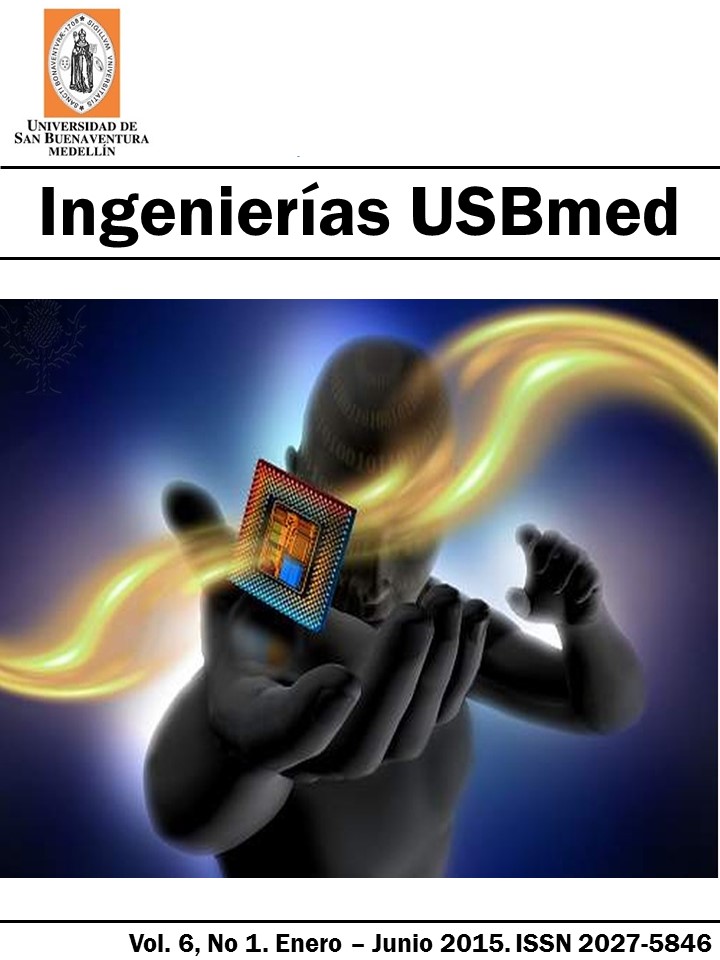View/Download
How to Cite
Nava, V., Fabelo, R., & Romero, J. (2015). Electrical energy management process automation in the residential area. Ingenierías USBmed, 6(1), 13–23. https://doi.org/10.21500/20275846.1720
More Citation Formats
License terms
▼
This journal provides immediately free access to its contents under the principle that make available the research results for free to the public, helps for a greater global exchange of knowledge.
Therefore, the journal invokes the Creative Commons 4.0
License attributions: Recognition – Non-commertial - Share equal. Commercial use and distribution of original or derivative works are not permitted and must be done with a equal license as the one that regulate the original work.
Abstract
This research presents a design and implementation of an “Electrical Energy Management Process Automation” (EEMPA) in the residential area. The system consists of an electrical energy management software that runs on a central control computer connected through a wireless network under the IEEE 802.15.4 standard and a mesh topology, to remote devices responsible for controlling residential lighting and air conditioning services with respect to electricity consumption and user parameter settings. The hardware design is based on the AVR® XMEGA® series microcontroller from Atmel®. For the control algorithms development, an electrical energy consumption pattern study is conducted by installing sensors for detecting the presence of people as well as lamps and air conditioning system fan motor and compressor on/off state changes, an analysis of the collected data is performed and based on its results, design and simulation of the control algorithms are conducted on Matlab® simulation tool in order to be implemented later in the control software. EEMPA development will considerably reduce the electrical energy consumption in the residential sector.
References
[1] IEA, Gadgets and Gigawatts: Policies for Energy Efficient Electronics. Paris, France, IEA, pp. 27, 2009.
[2] E. Rosas. (2010). Perspectivas del Sector Energético. [Online]. Available:
http://www.venamcham.org/index.php?view=article&id=117%3Aperspectivas-sector-energetico&format=pdf&option=com_content
[3] A. Villegas; J. Aller; P. Oliviera; M. Martínez; H. Díaz; L. Salazar; J. Molina and González, M. (2010). La USB Ante La Crisis Del Sector Eléctrico Venezolano. [Online]. Available: http://www.innovaven.org/quepasa/ecoana26.pdf
[4] W. C. Turner and S. Doty, Energy Management Handbook. Lilburn, Georgia: The Fairmont Press, 2007, pp. 577 - 578.
[5] P. G. Kini and R. C. Bansal, Energy Management Systems. Rijeka, Croatia: InTech, 2011, pp. 6.
[6] B. L. Chapeheart; W. C. Turner and W. J. Kennedy, Guide to Energy Management. Lilburn, Georgia: The Fairmont Press, 2012, pp. 37 - 42.
[7] S. Marttila, “Home Automation – A Challenge for Electrical Designers, Contractors and Electricians”. M.S. thesis, Faculty of Electronics, Helsinki University of Technology: Espoo, Finland, 2009.
[8] A. Thumann and P.D. Metha, Handbook of Energy Engineering. Lilburn, Georgia: The Fairmont Press, 2009, pp. 279 - 302.
[9] Atmel AVR2130: Lightweight Mesh Developer Guide, Atmel Corporation, San Jose, California, pp. 4 – 21, 2014.
[10] Atmel AVR1631: Single Phase Energy Meter Using XMEGA A, Atmel Corporation, San Jose, California, pp. 4 – 27, 2012.
[11] 8-bit Atmel XMEGA AU Microcontroller: XMEGA AU MANUAL. Atmel Corporation. San Jose, California, 2013, pp. 343.
[12] R. A. Bjørnerud, “Event System Implementations for Microcontroller Circuits”. M.S. in Electronics, Norwegian University of Science and Technology, Norway. 2009.
[13] Dimming AC Incandescent Lamps Using A PIC10F200. Microchip Technology Incorporated. USA, pp. 1 – 6, 2005.
[2] E. Rosas. (2010). Perspectivas del Sector Energético. [Online]. Available:
http://www.venamcham.org/index.php?view=article&id=117%3Aperspectivas-sector-energetico&format=pdf&option=com_content
[3] A. Villegas; J. Aller; P. Oliviera; M. Martínez; H. Díaz; L. Salazar; J. Molina and González, M. (2010). La USB Ante La Crisis Del Sector Eléctrico Venezolano. [Online]. Available: http://www.innovaven.org/quepasa/ecoana26.pdf
[4] W. C. Turner and S. Doty, Energy Management Handbook. Lilburn, Georgia: The Fairmont Press, 2007, pp. 577 - 578.
[5] P. G. Kini and R. C. Bansal, Energy Management Systems. Rijeka, Croatia: InTech, 2011, pp. 6.
[6] B. L. Chapeheart; W. C. Turner and W. J. Kennedy, Guide to Energy Management. Lilburn, Georgia: The Fairmont Press, 2012, pp. 37 - 42.
[7] S. Marttila, “Home Automation – A Challenge for Electrical Designers, Contractors and Electricians”. M.S. thesis, Faculty of Electronics, Helsinki University of Technology: Espoo, Finland, 2009.
[8] A. Thumann and P.D. Metha, Handbook of Energy Engineering. Lilburn, Georgia: The Fairmont Press, 2009, pp. 279 - 302.
[9] Atmel AVR2130: Lightweight Mesh Developer Guide, Atmel Corporation, San Jose, California, pp. 4 – 21, 2014.
[10] Atmel AVR1631: Single Phase Energy Meter Using XMEGA A, Atmel Corporation, San Jose, California, pp. 4 – 27, 2012.
[11] 8-bit Atmel XMEGA AU Microcontroller: XMEGA AU MANUAL. Atmel Corporation. San Jose, California, 2013, pp. 343.
[12] R. A. Bjørnerud, “Event System Implementations for Microcontroller Circuits”. M.S. in Electronics, Norwegian University of Science and Technology, Norway. 2009.
[13] Dimming AC Incandescent Lamps Using A PIC10F200. Microchip Technology Incorporated. USA, pp. 1 – 6, 2005.
Downloads
Download data is not yet available.














